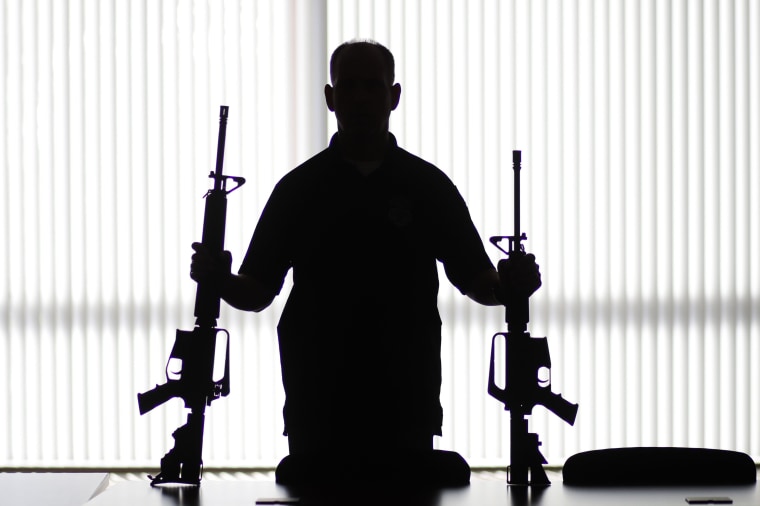An Australian program to buy back firearms and tighten rules on gun ownership has prevented an estimated 16 mass shootings over two decades, researchers said Monday.
The buyback law was enacted in 1996 after a mass shooting in which 35 people were shot and killed and 23 injured at a cafe in Port Arthur, Tasmania.
The attack disgusted Australians, who supported the new laws and turned in more than 1 million illicit firearms, the researchers, who include pro-gun control activists, said.
“Provisions included uniform gun registration, repudiation of self-defense as a legitimate reason to hold a firearm license, locked storage, a ban on private gun sales and civilian ownership of semiautomatic rifles and pump-action shotguns, and standardized penalties,” they wrote in their report, published in the Annals of Internal Medicine.
Two buyback programs and 26 uncompensated amnesties between 1996 and 2015 resulted in the surrender of 1,038,089 illicit firearms, according to the report.
The Australian law has been invoked with increasing frequency in the U.S. by gun control advocates, who cite it to counter arguments that gun control cannot and does not work.
U.S. politicians seem little inclined to call for such programs and analysts say the U.S. public is unlikely to respond as enthusiastically as Australians did.
Simon Chapman of the University of Sydney and colleagues have watched to see what happened in Australia since then.
In the 18 years before and including the Port Arthur massacre, the new analysis showed that 13 mass shootings happened between 1979 and 2013. "None has occurred in the 22 years since," they wrote.
“Many believe that these data indicate that gun law reforms effectively stopped firearm massacres," the researchers wrote. "However, others contend that this interpretation is unwise because of the rarity of these events compared with more common incidents in which fewer than five persons died."
Chapman, a former member of the Australian Coalition for Gun Control, and his team ran computer models to see what might have been expected in the absence of the law.
Before 1996, there were approximately three mass shootings in Australia every four years. “Had they continued at this rate, approximately 16 incidents would have been expected since then by February 2018,” they wrote.
Australia has a smaller population than the U.S. and had stricter gun laws even before the 1996 measure was enacted. Gun death rates in the U.S. were 11.2 per 100,000 people in 2015. That compares to a rate of 1.2 per 100,000 people in Australia.
The statistics show that the U.S. has an exceptionally high share of gun violence. More than 90 percent of all children aged up to 14 who are killed by guns in high-income countries are killed in the U.S., according to the Centers for Disease Control and Prevention.
The CDC has found that at least 1,300 U.S. children under the age of 17 die from gunshot wounds every year and nearly 5,800 are injured, and says that’s likely an underestimate.
Firearm-related deaths are the third leading cause of death overall among U.S. children aged 1 to 17 years, the CDC has found. That’s more than the number of deaths from pediatric congenital anomalies, heart disease, influenza and/or pneumonia, chronic lower respiratory disease, and cerebrovascular causes.
Medical groups and researchers say gun deaths are a public health issue and call for more studies to be done to help settle arguments over what factors lead to the extraordinarily high rate of gun violence in the U.S.
"Gun violence in the United States has become a profound public health crisis,' the National Association of County and City Health Officials has said. "It is an on ongoing, deadly epidemic and we must work to reduce its toll."
But Congress has declined to remove funding language that forbids the CDC to use such data to advocate for gun control. And the CDC has interpreted this to mean it should play down gun research.
So privately funded researchers have been publicizing their own findings about gun violence.
They’ve found police officers are most likely to be killed in states where the most people own guns; that mass killings inspire copycats; and that states with the strictest gun laws have the fewest gun deaths.
Johns Hopkins University has established a Center for Gun Policy and Research where researchers have found, for example, that requiring universal background checks and permits to purchase handguns can reduce homicides, suicides, shootings of police officers and can help stop criminals from getting firearms.




